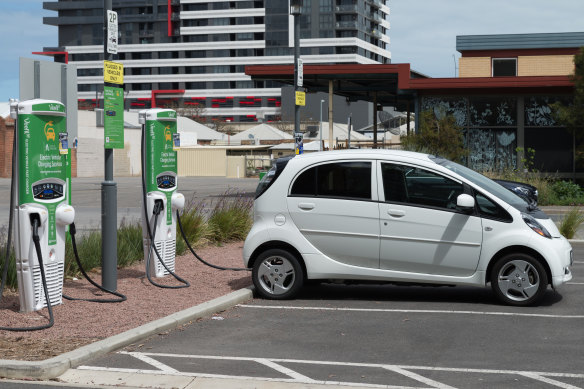Opinion
Petrol-powered cars are an environmental catastrophe. I’ll miss them anyway
Farhad Manjoo
WriterI’ve been driving for nearly 30 years, but until recently, I hadn’t ever changed my car engine’s oil by myself. Of course I hadn’t: By the time I got my first car, in the mid-1990s, cars had long since become reliable enough that you could go years without popping the hood. In Southern California, where I grew up, there’s a quick-lube place on just about every other corner. Owning a car meant pulling into one as regularly as you visited a dentist, catching up on old magazines in the lounge as a technician mucked about under your ride for a half-hour before you went on with your day.

Until recently, I hadn’t ever changed my car engine’s oil by myself.Credit: iStock
But a month ago, figuring I may not have many more chances, now that oil-free electric cars are becoming the norm, I decided to jack up my car and do it myself. The process wasn’t nearly as messy as it might sound and, thanks to YouTube, was pretty simple, even for a lube noob. I was able to drain the spent oil, pour in new oil and pop out and replace the filter without a hitch.
I didn’t save any time or money doing it on my own – the equipment I had to buy was more expensive than paying to have the oil changed, and I’ve still got to take the dirty oil to a service station for proper disposal. But for the uninitiated, I’d recommend trying a DIY oil change at least once. Decked out with cameras, touch-screens and microprocessors, modern cars can feel like entirely digital devices, little more than iPhones on wheels. However, there’s nothing like replacing a stream of gooey sludge with a bottle of fresh motor oil to remind you of what anachronistic marvels our petrol-burning cars really are.
The fossil-fuel-powered internal combustion engine is slowly on its way out – and good riddance. As I’ve written before, it’s long past time we replaced these inefficient, pollution-belching, climate-warming beasts with other ways of getting around. And even if electric cars are no panacea, they’re a huge improvement over their petrol predecessors.
But let’s not put petrol-powered cars out to pasture without a proper farewell. They are among the last remnants in our daily lives of the pistoning industrial age – machines powered not by quietly streaming electrons but by noisy, fiery explosion, by sequential gears and timing belts, by the primal growl of thermal expansion. America’s overreliance on cars has been ruinous, but as we celebrate another national birthday, let’s remember, too, how the petrol-powered car helped realise a quintessentially American idea of liberty: the freedom to roam just about anywhere you please.
Yes, I’m romanticising the automobile, and yes, the poetic way the automotive industry wants us to think about cars is rarely reflected in the misery that is daily urban commuting.

Electric cars are quieter, more efficient, less polluting and easier to maintain.
But as critical as I’ve been of cars, I can’t deny loving driving and loving it in a primal way – loving the thrum of a revving engine, loving slaloming in and out of turns on a windy country road, loving simply going very far, very fast, conveyed by fire.
And here’s another confession: I’ve never felt anything approaching this sort of exhilaration in an electric car.
Electric cars are quieter, more efficient, less polluting and easier to maintain and generally even accelerate more quickly than their petrol counterparts.
But boy, can they be dull. The fastest electric car I’ve driven, Tesla’s Model S Plaid, is also the fastest car I’ve ever driven. The Plaid can go from a dead stop to 100km/h in about 2 seconds.
Yet I’ve driven petrol-powered cars half as fast that were twice as fun.
On a weekend road trip not long ago, I rented one of my dream cars, a manual-transmission BMW M3. The Bimmer isn’t nearly as quick as the Tesla – it needed almost five seconds to get to 100 – but because it’s lighter, more nimble and louder and its engine quivers like a purring cat as you slide from gear to gear, the M3 felt alive in a way unmatched by anything Elon Musk has ever made.
None of this is to suggest we should keep the internal combustion engine around any longer than necessary. I yearn for silent roadways and pristine air, for the end of oil wars and pump-price politics, for corner petrol stations and oil-change shops to be replaced by charging stations, independent bookstores and Boba tea spots. (A coastal liberal can dream!) The internal combustion engine must die.
Still: Long live the internal combustion engine!
This article originally appeared in The New York Times.